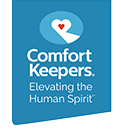The benefits of exercise, unlike the Fountain of Youth, are real—even for senior citizens who avoided exercise in their younger years.
Many research studies bear this out. They prove that seniors can improve their health and extend their longevity and time of independent living by extending their arms and legs in regular physical activity:
- According to a 2006 study published in the Journal of Gerontology: Medical Sciences, regular aerobic, strength, balance and flexibility exercises can lower seniors’ chances of major walking disabilities. The study involved individuals ages 70 to 89, including those who had been sedentary for years.
- A study at the Jean Mayer USDA Human Nutrition Research Center on Aging at Tufts University in Boston involved seniors who were physically inactive and had a variety of health problems. Those who stayed on track with the study’s exercise program showed the greatest improvement in physical functioning.
- A study at the Accident Research Center in Victoria, Australia, was more specific in focus, concluding that exercise reduces at-home falls among the elderly more than home safety modifications or vision correction.
- Yet another study, in the American Journal of Preventive Medicine, reported that improvement in physical function was greatest for the previously least active participants in a tai chi class that met twice a week for six months.
An exercise program that combines aerobic conditioning, flexibility, strength training, and relaxation techniques offers seniors—all of us, actually—a multitude of benefits. Among them:
- Coordination and mobility. Makes chores and activities easier, leading to greater independence.
- Balance. Lessens the risk of falling.
- Strength and endurance. Improves ability to perform daily activities of living, without stress.
- Immunity. Strengthens body’s defenses against infection and shortens recovery time.
- Strong bones. Reduces risk of osteoporosis and broken bones.
- Strong heart and lungs. Lowers risk of heart disease.
- Disease prevention and management. Decreases risk of chronic conditions such as dementia, diabetes and various cancers.
- Joint health. Promotes weight loss and strengthens muscles, putting less stress on joints. Also, the repetitive motion of exercise promotes the body’s natural lubrication of joints, helping manage arthritis pain.
- Attitude. Heightens self-confidence and mood. Natural endorphins produced by exercise help alleviate depression.
- Social life. Provides opportunities to meet people in group activities and classes.
- Rest. Promotes restful sleep, which decreases disease risk.
- Mental function. Helps prevent Alzheimer’s disease and dementia by improving circulation and memory.
- Metabolism and weight loss. Makes the body an efficient calorie-burning machine. Muscle burns more calories than fat.
What Kind of Exercise for Seniors?
Just like a balanced diet from the basic food groups, exercise best promotes good health and independent living when it consists of a variety of activities, including:
- Aerobic conditioning. Activities such as walking, bicycling, swimming, dancing and low-impact aerobics improve heart and lung health and help manage weight. Work up to 30 minutes a day most days of the week. For those with arthritis, low- to no-impact exercise such as water aerobics, swimming, elliptical trainer and stationary bicycle may be best.
- Flexibility and agility exercises. These include stretching and activities like yoga or tai chi. They help increase range of motion and improve balance, which helps prevent falls.
- Strength training. This includes working with free weights, resistance rubber bands and weight machines. These activities strengthen bones and muscles, making daily activities easier to accomplish.
- Relaxation techniques. Yoga classes include relaxation techniques, such as deep breathing, which help support overall cardiac fitness, lower blood pressure, and may even improve the immune system.
For suggestions on adopting an exercise program, read the National Institute on Aging’s exercise guide, available atwww.nia.nih.gov/HealthInformation/Publications/ExerciseGuide/default.htm.

